Your resource for tips, ideas, and enjoying life in the Inland Northwest

A supplement of the Lewiston Tribune and Moscow-Pullman Daily News. SPRING
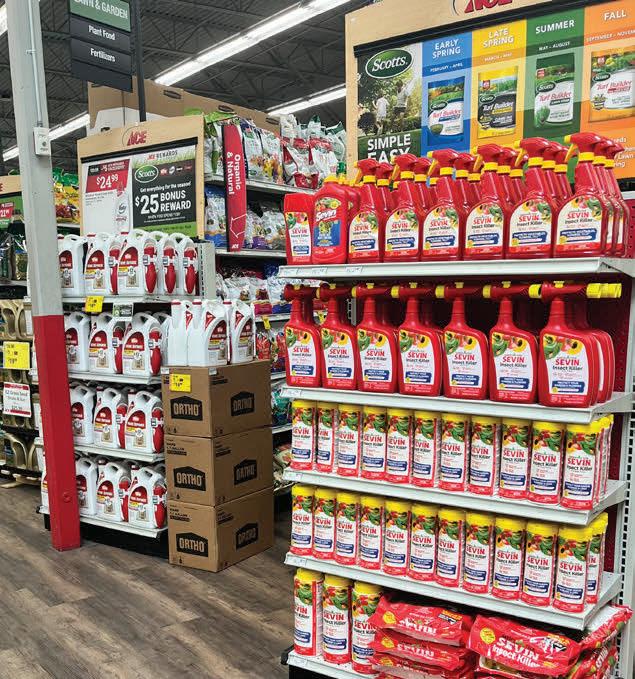
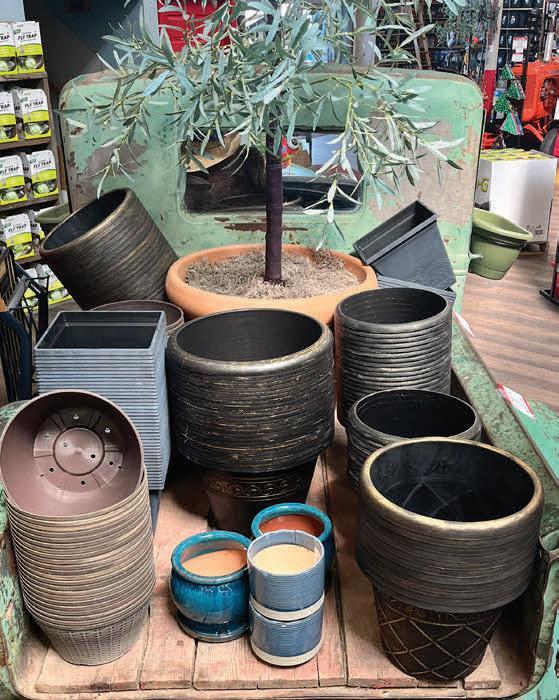





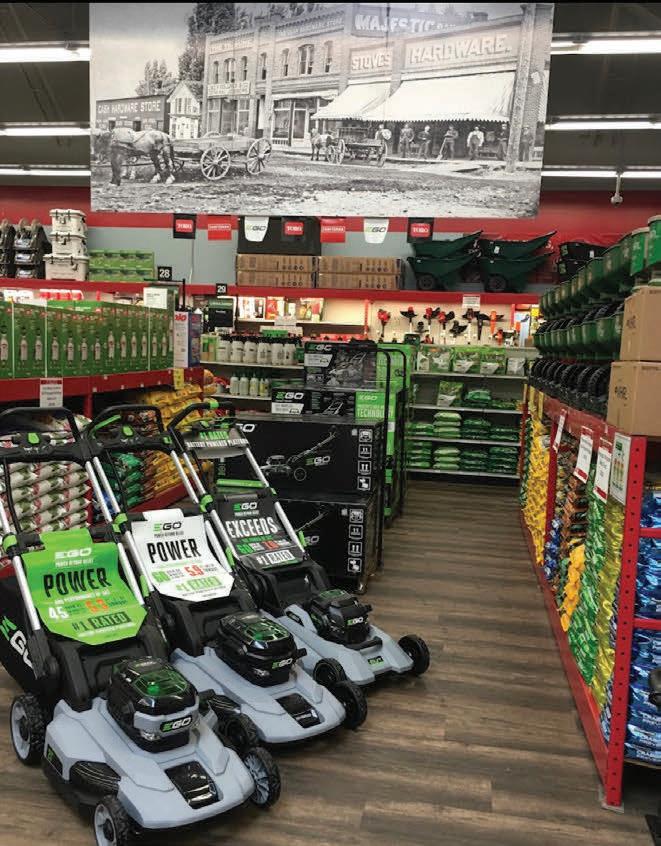
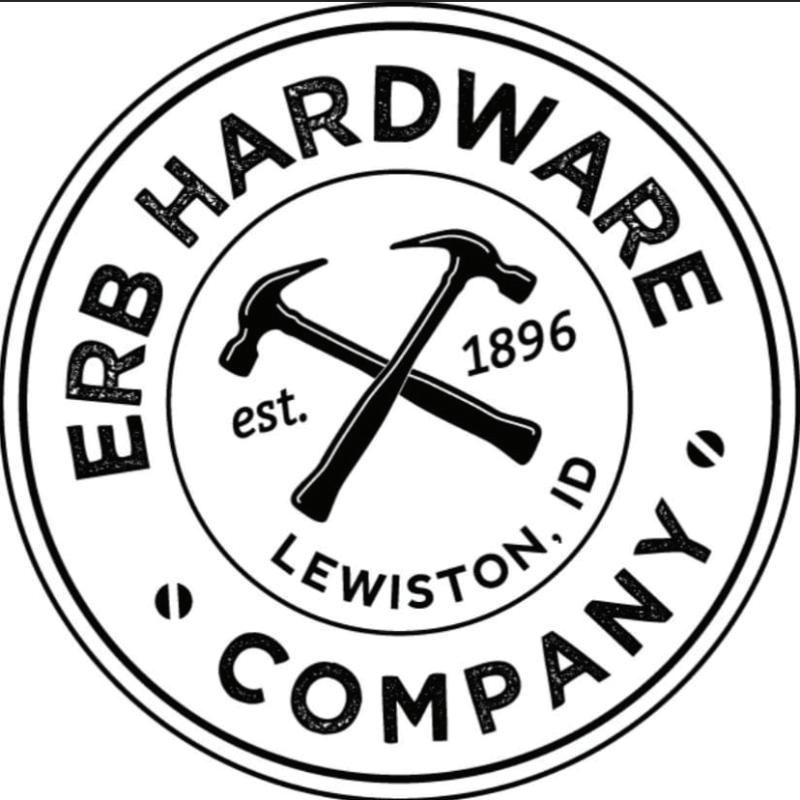

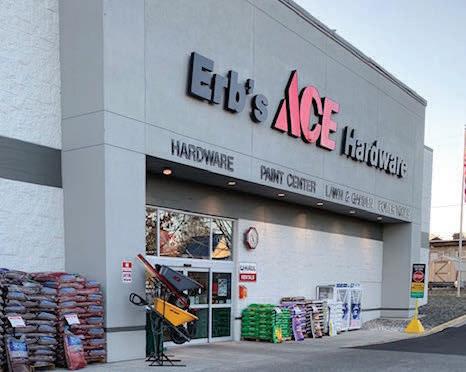


Your resource for tips, ideas, and enjoying life in the Inland Northwest

A supplement of the Lewiston Tribune and Moscow-Pullman Daily News. SPRING












There are many things that can motivate someone to buy a home. Maybe you and your spouse have decided it’s time to start a family and you need a little more space. Maybe you’d like to make an investment you know will appreciate. Or, you may just want to get out of the crowded city. Whatever your reason, homeownership is a great choice for many people, but it can be complicated.
Many people make the mistake of checking online for house listings right away. You might be setting yourself up for disappointment, however, if you immediately start looking for your dream house. The first thing you should do is figure out what range of homes is realistic given your budget.
The best way to start is to visit your local bank or mortgage company to find out what kind of mortgage makes sense for someone in your situation. If you don’t have a lot of cash now but are quickly moving up the ladder at your company, you’ll be in a different financial position than someone who has been saving for a home for a decade.
Before visiting your local real estate agency, consult with a mortgage expert. Once you know exactly what you’re able to afford, you can sit down with your agent and do a much more precise search for a dream house that’s right for you.


Open concept designs have been on trend for many years. However, the recent move towards working from home has led many to rethink their living spaces. This guide will help you decide which style best suits your needs.

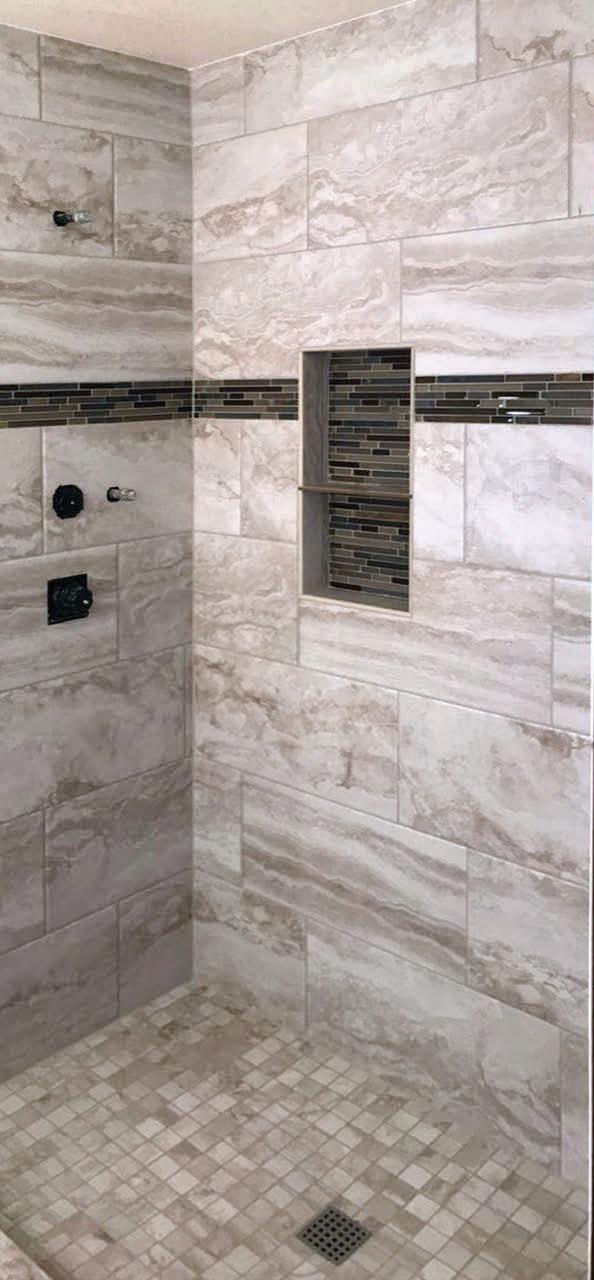
Open floor plans allow you to make the most of a small space, enabling less-restricted movement and optimal light. Choose this design if you:
• Have small children. If you need to manage several tasks while keeping an eye on your little ones, an open concept keeps everyone in your line of sight.
• Enjoy entertaining. This floor plan allows large groups of people to mingle and move around with ease.
• Have accessibility needs. If you have household members or guests who need help with accessibility, an open concept affords adaptability.


• Plan to resell. Your resale value may be higher with an open floor plan. Potential buyers appreciate the freedom to adapt a space to their needs.
Closed floor plans provide more individual solitude and give you more control over noise and air quality. Choose this design if you:
• Need quiet or privacy. If your household has multiple people studying or working at home, separate spaces are essential for privacy.
• Are eco-conscious. A closed concept design lets you heat rooms selectively to minimize energy consumption.
• Love to cook. Although home cooking creates a cozy atmosphere, the scents of aromatic cuisines may be unwelcome if they invade every corner of your open concept home.
If you’re considering an interior remodel, a local architect or contractor can help you find the ideal solution for your family.
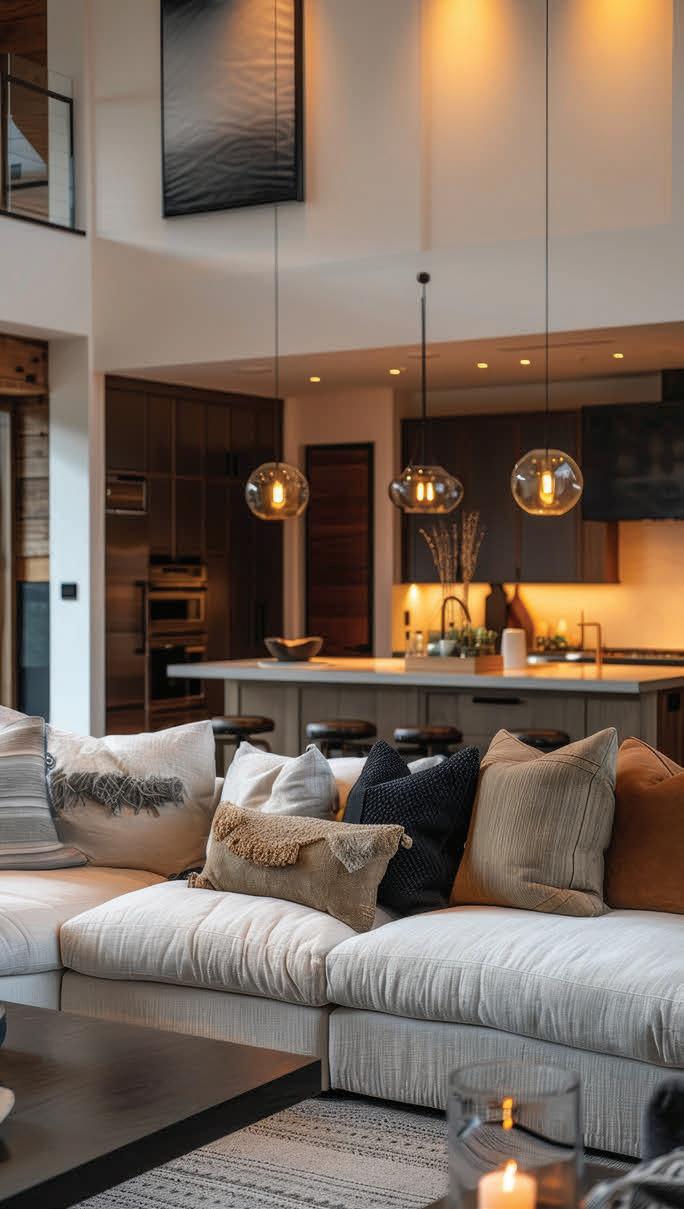





If you want to update your brick fireplace, applying a fresh coat of paint can do wonders. Here’s a stepby-step guide on how to paint your brick fireplace.
1. First, use a wire brush to remove loose dirt and debris from the brick and mortar.
2. Next, clean the area around the fireplace with a shop-vac.
3. Then, give the brick a deep clean with an all-purpose cleaner or degreaser to remove accumulated soot and other mineral residues that could prevent the paint from properly adhering.
4. Tape off the edges of your fireplace and trim. Use a latex primer to get the brick ready for a fresh coat of paint. Keep in mind that brick is porous. Therefore, a second coat may be necessary to get your desired coverage.

5. Once the primer has dried, it’s time to paint the brick. Start by painting the mortar lines with a brush. Then, use a roller to cover the face of the bricks. Once the first coat has dried, apply a second for a long-lasting, consistent finish.
Neutral colors like white and gray are popular shades. However, you can get creative and use bold or contrasting colors to make your fireplace a focal point. Paint with a matte or eggshell finish will allow the natural texture of the brick to shine through, whereas a semi-gloss finish will reflect light and make cleaning easier.
If you notice that your brick fireplace is crumbling or damaged while preparing it for paint, consult a professional masonry company to investigate and make the necessary repairs.
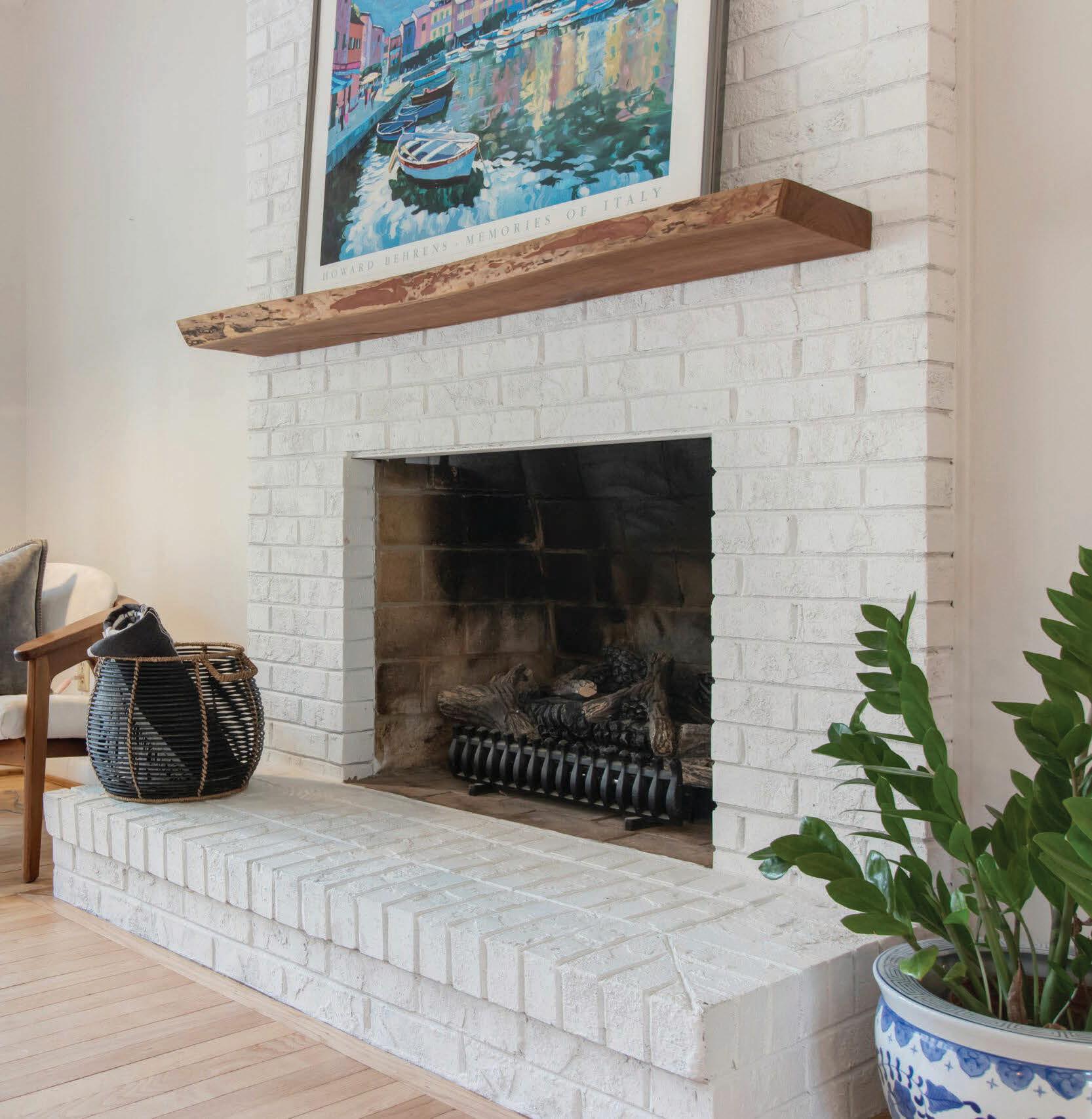





Kitchens are expanding, breaking down partitions and are becoming multifunctional. Of course, they’re still used for cooking, but now people gather there to enjoy meals, have long discussions, watch television or work. Therefore, it’s a room that must be able to balance its practical and aesthetic characteristics.
The layout of a kitchen begs the question: How should various surfaces be distributed? Do you need working surfaces but also a table for quick meals? You can better plan the layout of the room by first evaluating the needs that correspond to different activities. Countertops provide the basic requirements for a working surface. The area for food preparation is

of 12 inches. The food preparation area could also be found opposite the cooking surface and include the sink. It’s important to have a maximum amount of countertop between the two.
If you don’t have a large enough working area you could always plan to install an island. This can be used for food preparation. Integrating a sink will help clear the surrounding countertops. Why not install a dishwasher there as well?
On the other hand, if you absolutely need an eating area, a table with a few chairs has the advantage of being movable when required. Alternatively, a mobile island, accompanied by stools, can be installed for greater versatility and can serve as a work area as well as
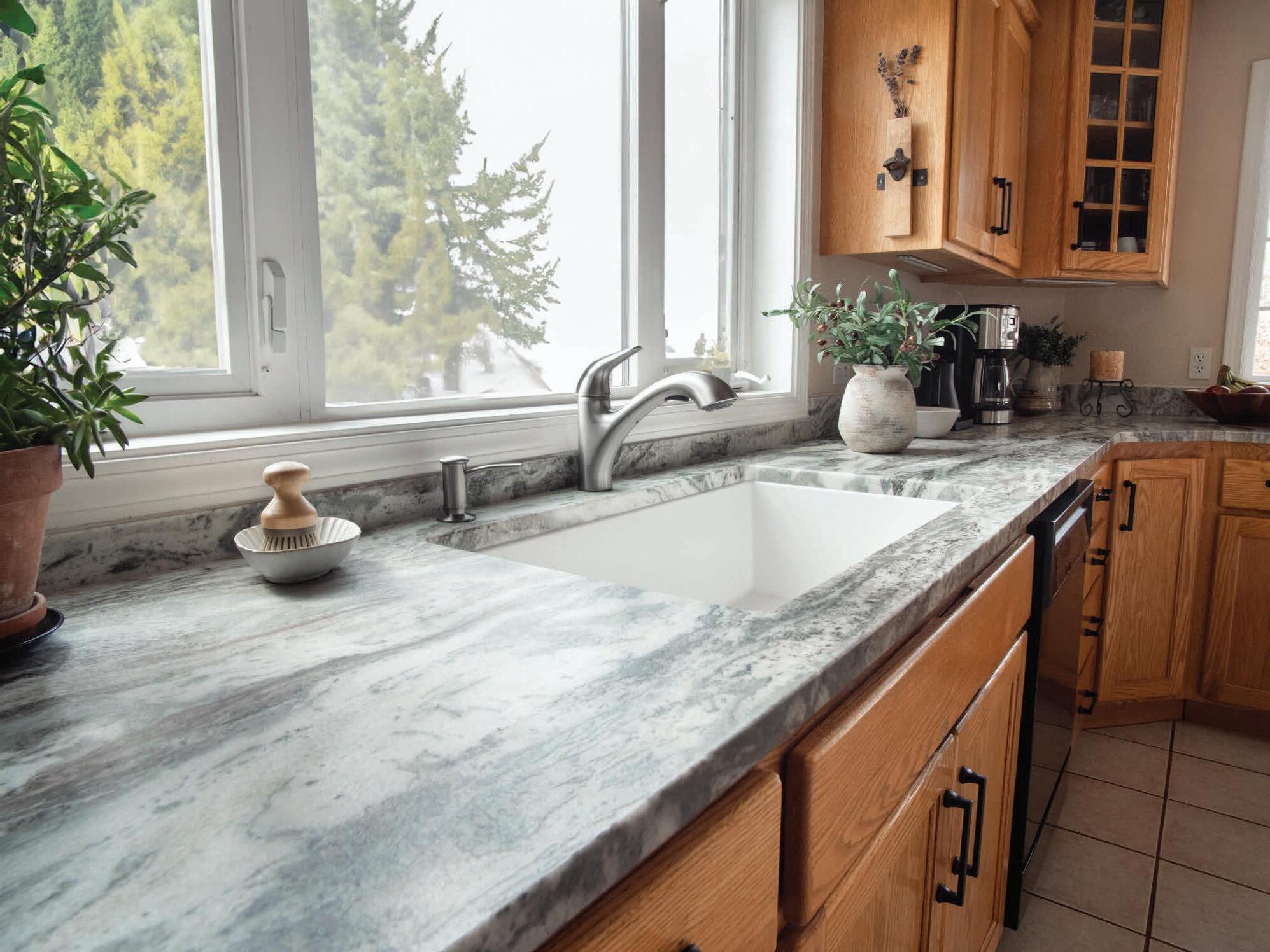



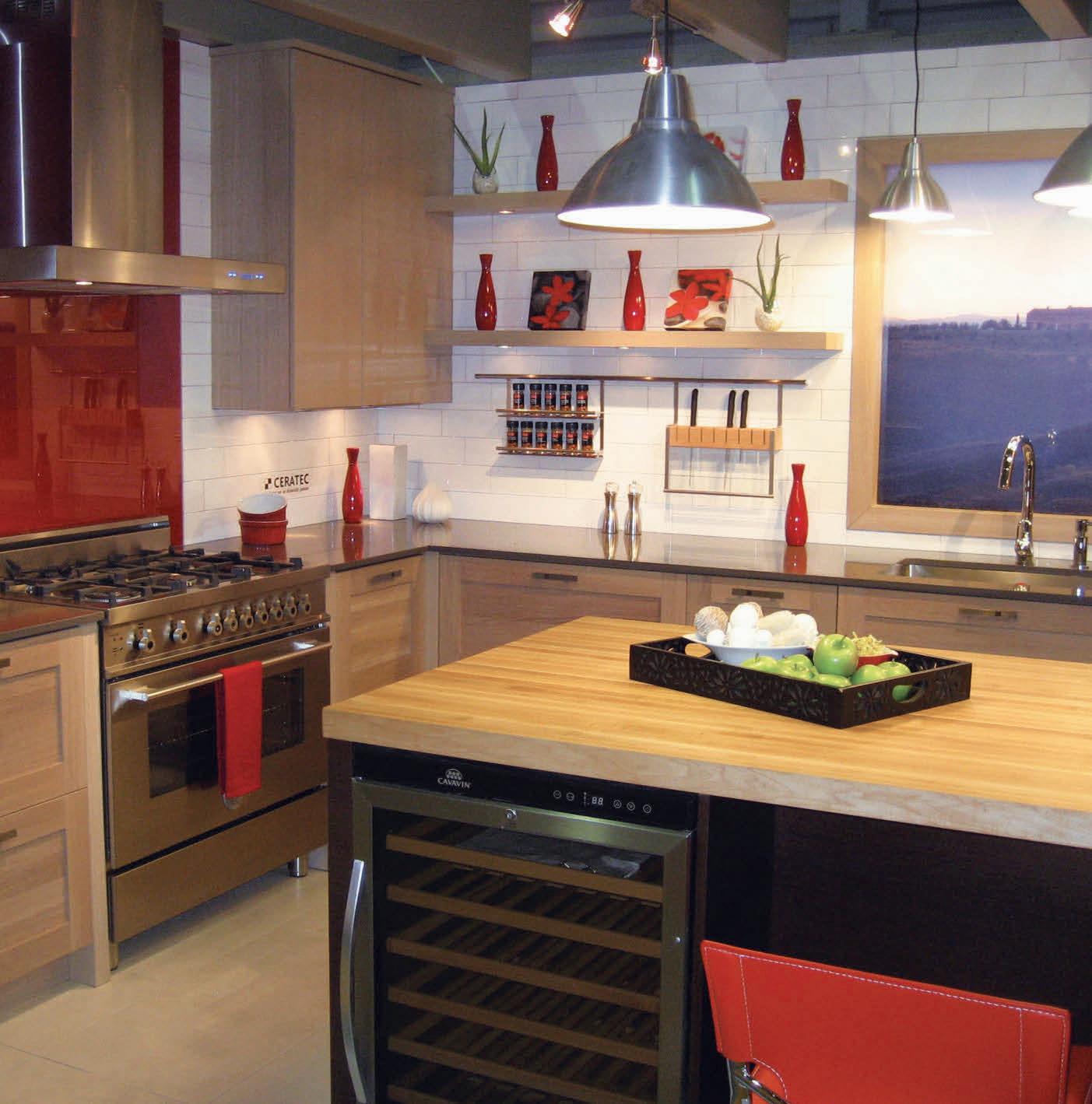
We have over 100 years combined experience in sales and service in the industry with our staff. We specialize in Energy Star manufactured homes as well as foundations, slabs, garages, site prep and basements. We have general contracting licenses in Idaho and Washington. We have a wide range of turnkey plans available to meet your needs. We offer single section, double section, and triple section homes from the entry level to the top of the line for your housing needs.

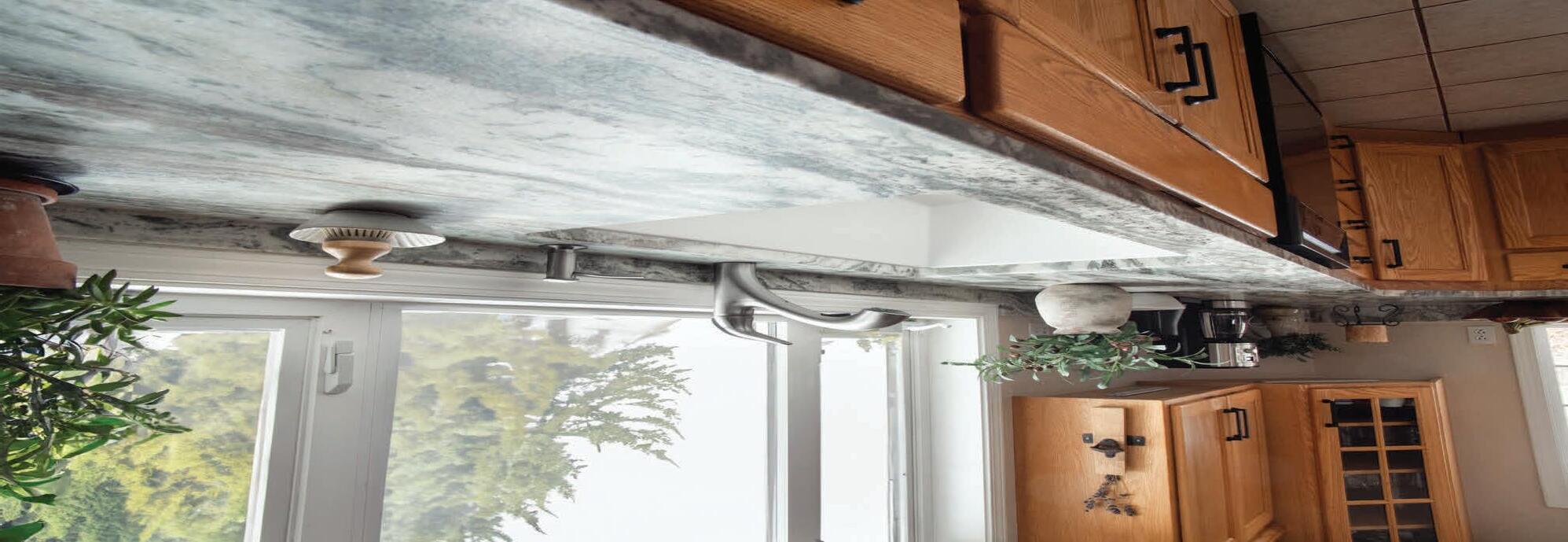
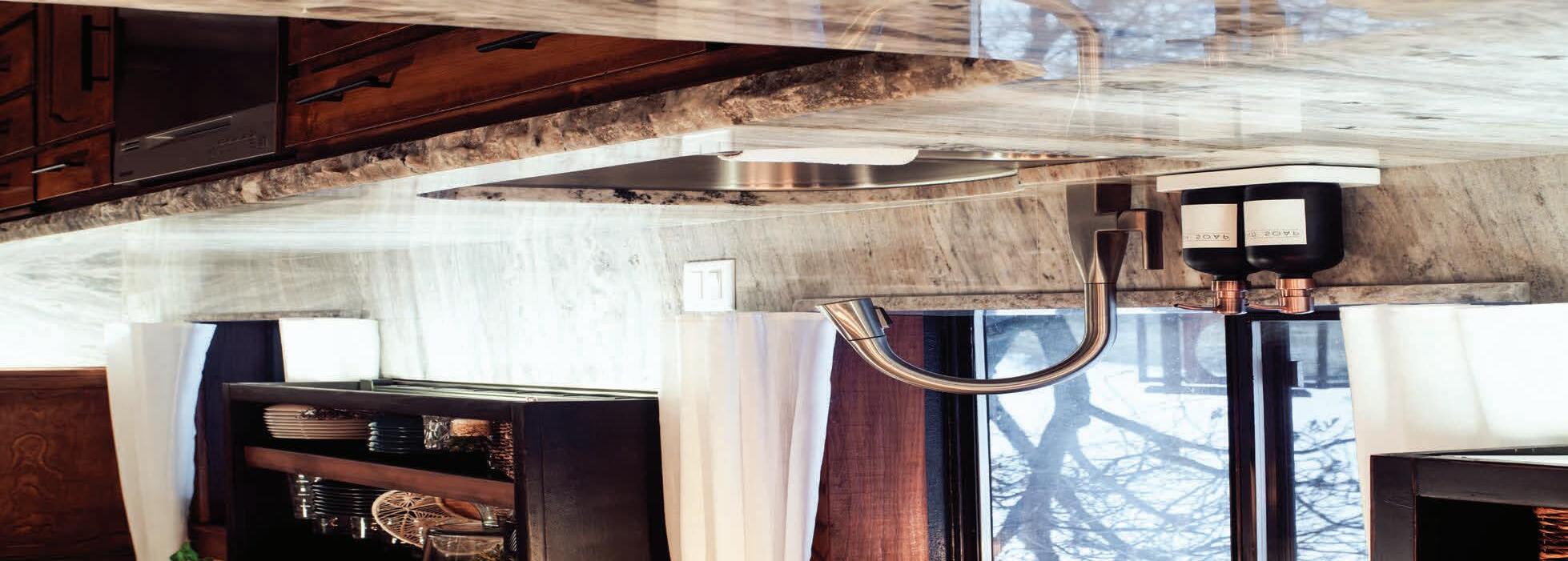
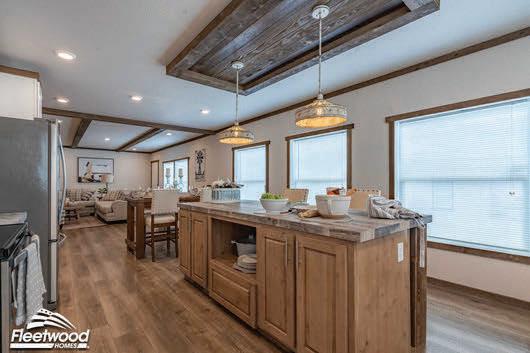


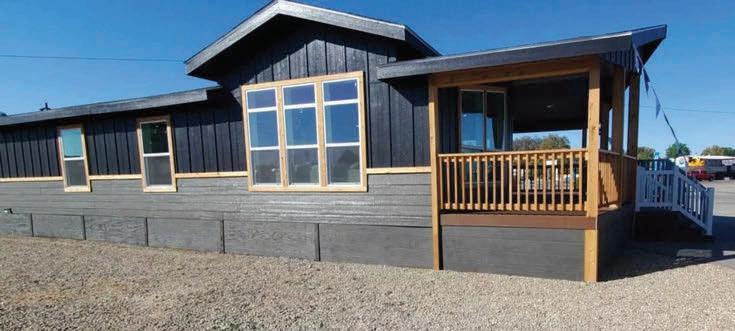














Spring is finally here and you’re having lots of fun in your pool— or your neighbor’s? Unfortunately, you can’t always be swimming, and the humidity, extreme heat and sunlight can make your home feel very uncomfortable. The solution? Install an air conditioning system to turn your home into a cool oasis during heat waves.
Should you get a window unit or a portable air conditioner? A central air conditioning system or a heat pump? You can get all the advice you need from an air conditioning expert. These pros can suggest a model that fits your needs, the characteristics of your home, your
budget and municipal bylaws for acceptable noise levels. Be sure to look into the latter before you start shopping. If you decide on a central air conditioner or heat pump, it’s best to hire a contractor for the job. That way you can be sure the installation is done to standard and that your unit will give you optimal performance.
You already enjoy the benefits of air conditioning in your home? Make sure your system is working properly and provides good quality air. See to it that all the components (fan, filters, pipes, etc.) are properly maintained via an annual inspection by an expert.











Companion planting is a gardening technique that creates beneficial relationships between different plants. In fact, when certain plants are grown together, they can promote each other’s growth and health. Here are some examples:
1. Carrots and leeks. These vegetables have deep roots and don’t compete for the same nutrients, which promotes mutually beneficial growth. Leeks also have insect-repelling properties that can protect the carrots from pests.
2. Basil and tomatoes. Planting them side by side can increase your yield and improve the quality of your harvest. Basil has insect-repelling properties that keep flies and mosquitoes away from the tomatoes. It can also help enhance their taste.
3. Corn, beans and squash. Known as the “three sisters” in indigenous cultures, these plants make great companions because they benefit each other in various ways. The beans climb the corn stalks while the squash grows on the ground. This symbiotic relationship creates an environment where each plant can thrive.
4. Marigold and cabbage. Marigolds have insect-repelling properties that can keep pests away from cabbage and encourage pollination by attracting bees.
Companion planting is a holistic approach to gardening that promotes biodiversity and plant health. If you’re unsure which plants make good companions, don’t hesitate to ask a gardening specialist for advice.
Some plants should never be planted side by side. This is particularly true for potatoes and tomatoes. Do your research to avoid unpleasant surprises!
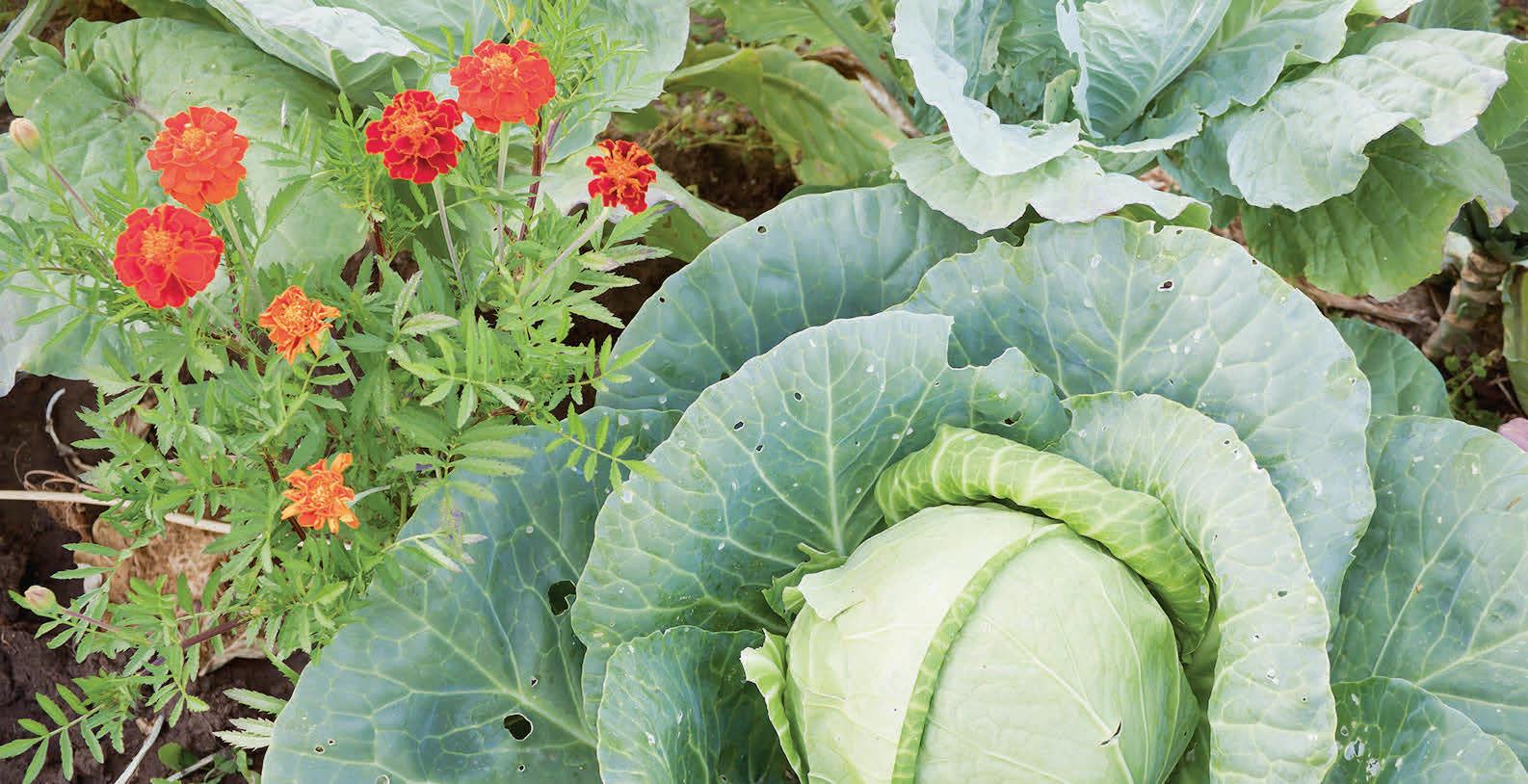

Harmful insects like Japanese beetles and aphids can wreak havoc on your vegetable garden. Fortunately, there are various strategies for dealing with these invaders while preserving your garden’s ecological balance. Here are a few tips.
OBSERVE AND IDENTIFY
You must first correctly identify the undesirable insects before taking steps to eliminate them. Some insect species can be beneficial. For example, some help pollinate flowers while others attack other harmful bugs. Do your homework!
ATTRACT NATURAL PREDATORS
Managing insects in your vegetable garden also means encouraging the presence of natural predators. Certain species, such as ladybugs and parasitoid wasps, can help control pest populations.
USE NATURAL REPELLENTS
Rather than resorting to chemical pesticides, try using natural repellents to keep pests at bay. Garlic, chili pepper, mild soap and essential oils can effectively protect your crops while preserving the health of your garden.
PRACTICE CROP ROTATION
By changing the location of crops from one year to the next, you can reduce the risk of infestation. The pests associated with certain plants cannot establish themselves in the soil.
USE TRAPS AND PHYSICAL BARRIERS
Many experts recommend using traps and physical barriers to protect your vegetable garden. For example, sticky traps and protective netting can prevent harmful insects from reaching your precious plants.
With these tips and those from your local gardening store, you can defend your plants against invaders.

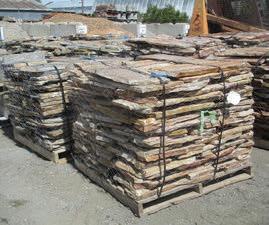

Do you have children? Getting them used to doing chores at an early age is a great idea. It teaches them responsibility and helps prepare them to be independent adults while also giving you a helpful hand. Spring cleaning is the perfect opportunity to show them correct cleaning methods and have fun while you do it.
Your child’s safety is most important. For younger kids, focus on safe tasks, such as sorting toys or dusting furniture. Keep harmful cleaning products out of their reach, and explain why certain items, like stepladders, aren’t toys.
Spring marks the end of winter—and the start of spring cleaning. Washing your windows is the ultimate way to brighten up your home. However, cleaning glass without leaving streaks can be tricky. Follow these tips to make your windows shine.
You’ll need the following supplies:
• White vinegar
• Warm water
• Spray bottle
• Lint-free or microfiber cloths
• Rubber squeegee
• Newspaper

Start by dusting the window frames and removing any dirt, such as insect debris and spider webs. To lift off stickers or adhesive residue, wet the area and scrape it off gently with a plastic scraper.
Make a homemade cleaning liquid by mixing a three-to-one solution of water and white vinegar in a spray bottle. Generously spray this solution onto the glass. Use a cloth or squeegee to wipe it clean. Then, remove any liquid residue with a dry cloth. If you still notice streaks, dampen a piece of crumpled newspaper and rub it on the glass to achieve a streak-free finish.
If you don’t have the time or prefer not to wash your windows yourself, you can get an impeccable clean by hiring a professional window cleaning company. This will help you quickly check this task off your spring-cleaning to-do list.
Ideally, you should wash your windows on a cloudy day to prevent the cleaning solution from drying too quickly and creating unsightly streaks.

Use your creativity to turn housework into a game. Transform each task into a friendly challenge, such as, “Who can clean up the fastest?” Since children like to imitate their parents, maintain a positive attitude. Play some upbeat music and dance while you clean.
Spring cleaning is a great opportunity to make your appliances sparkle and shine. Try these simple tips to keep your four most important appliances looking their best.
Use soapy water or an all-purpose cleaner to wipe the cooking surface and exterior. For the interior, use your oven’s self-cleaning function or clean it by hand using a paste made of water and baking soda.
Clean the interior with a mixture of white vinegar and lukewarm water. Don’t forget to clean accumulated dirt and crumbs from the door seals. For the exterior, an all-purpose cleaner is all you need.
Run an empty cycle using hot water with either
vinegar or bleach. Don’t forget to wipe down the rubber seals to prevent mildew. Finally, clean the exterior with a mild all-purpose cleaner.
Remove lint from the filter and vacuum up any remaining fluff. Also, prevent fires by ensuring the exhaust vent is unobstructed. To finish off, clean the exterior the same way you did your washing machine.

1. Garbage cans. Even if you empty them regularly, garbage cans can quickly accumulate bacteria and unpleasant odors. Be sure to wash them out with vinegar and hot water.
2. Light switches. These high-touch surfaces are breeding grounds for germs. Wiping them down with a clean cloth and all-purpose cleaner can make a big difference.
3. Cushions. Soft, decorative accessories need attention too. If possible, machine wash or vacuum them thoroughly to remove dust and allergens.
4. Coffee maker. This often-used appliance can develop limescale and grime buildup. Use a mixture of vinegar and water to sanitize the inside. Rinse it thoroughly afterward.
5. Fans. The blades and grilles on both ceiling and standing floor
fans quickly collect dust. Use a damp cloth to keep them clean.
6. Blinds and curtains. Machine wash your curtains and dust your blinds with a dry cloth to keep them looking fresh.
7. Vents. Although easy to miss, air vents trap dust and allergens. Use a vacuum cleaner or a damp cloth to keep them clean.

When you create a new garden, one of your first decisions will be whether to use raised beds or in-ground plots. To make the best choice, you should consider your space, soil and gardening goals. Here’s a quick overview of each option.
Raised bed gardening
Raised gardening or container gardening is fantastic for beginners as it gives you control over soil conditions and ease of maintenance. For example, you can fill raised beds with high-quality soil and avoid soil-related issues like poor drainage or nutrient deficiencies. If your yard has clay or sandy soil, raised beds give you a fresh start with the soil you use, so you can ensure optimal conditions for a successful garden.
Additionally, raised beds are easy on the back and reduce the need for bending or kneeling. This makes them more accessible to work in, especially if you have limited mobility. Moreover, the soil in raised beds warms up
more quickly in the spring, helping extend the growing season. This is especially beneficial for northern gardeners.
In-ground gardening
Traditional in-ground gardens are great if you’ve always dreamt of a large, expansive gardening space. It gives you enough room to plant a wider variety of crops, especially those requiring more space, like pumpkins, melons and corn.
A big advantage of an in-ground garden is cost. You don’t need to build or fill a raised structure, so it’s a cheap way to start growing your own food. Plus, plants in the ground establish deeper root systems, making them stronger and more resilient.
Both gardening methods have benefits, so mix and match or pick the style that best fits your gardening style. Start your gardening journey with the right supplies from a local gardening store to bring your vision to life.






































